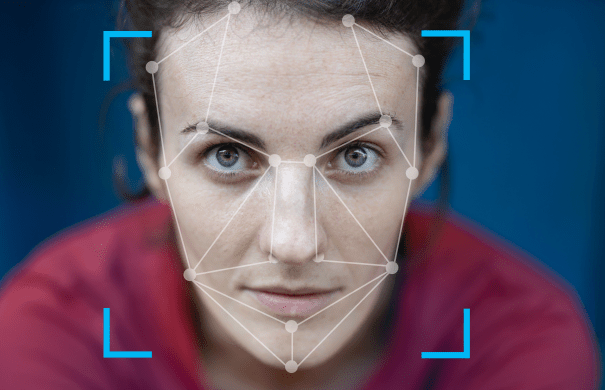Artificial intelligence is not a new term. The field of AI research appeared in 1956, and since then it has experienced ups and downs. In the 21st century, cognitive technologies have finally succeeded and started gaining traction. But together with an increasing interest came the misconceptions and myths about artificial intelligence. Many people have fears about their future because of the unknown potential of technology.
In this blog post, we would like to act as mythbusters and tell you about the popular AI myths and facts.
What Is AI?
A common misconception concerns the AI definition. The first thing that comes to mind for most is a humanoid robot that can move, talk and perform other human actions. But AI and robots are not synonymous, as they are entirely different concepts. They overlap only in that there are robots controlled by AI programs. Thus, AI is akin to a brain for them.
What is true artificial intelligence? Let’s clear up the definition:
Artificial intelligence is an area of computer science that aims to create software and machines that work and act like humans.
It consists of three interrelated concepts:
- Training Data (TD) — the initial dataset that the algorithm learns from. It contains inputs and possible outputs so that machine learning models can find patterns for the given information. The better the TD is, the better the algorithm performs.
- Machine Learning (ML) — the software that teaches algorithms to learn automatically from examples, instructions or direct experience. The main goal of ML is to create machines that can learn, develop and improve for themselves without explicit programming and human assistance, and make better decisions as a result.
- Human-in-the-Loop (HITL) — a machine learning model that requires human interaction. Since machines can’t be faultless and are only 70% accurate, human assistance is needed in case there are mistakes or if the level of confidence is low.
Thus, AI is a complex process of simulation of human actions by machines. Let’s dispel the most common myths about AI and machine learning.
Read also: The Ultimate Guide to Enterprise AI

Myth 1: AI Is Only for Large Businesses
The development of artificial intelligence solutions seems to be extremely complicated and scientific. Thinking about machine intelligence, people imagine futuristic robots, autonomous drones and self-driving vehicles. This tends to suggest that only an advanced tech company such as Amazon, Apple, or Google with billion-dollar budgets and extended teams of scientists and experts can afford to implement AI.
Reality: AI Is Available for Every Business
Actually, AI implementation doesn’t always require substantial expert research and investments of millions of dollars. There are many ready-made intelligent tools available for a vast range of companies that can be used to apply AI to their business processes.
Intelligent technologies are present in many aspects of our lives, but we may not notice them or think of them as artificial intelligence.
The popular examples are personal assistants such as Siri, chatbots, search and recommendation technologies, Google maps, autopilots, fraud detection functions, purchase predictions, and more.
Consequently
There’s nothing mysterious in the AI concept, and it can be introduced into any business. It can be integrated with the corporate system of any company (not just of the technological giants). The process will require more expertise in the company’s needs rather than deep data science knowledge.
Read also: Machine Learning in Business: 8 Use Cases
Myth 2: AI Algorithms Can Process Any Data
It’s generally believed that machine learning algorithms are the most important elements in the whole system. An algorithm may seem to be all-powerful and is equated with the human brain that can make sense of any messy data.
Reality: The Quality and Quantity of Data Matters
Algorithms don’t possess magic power and are not able to make decisions out of nowhere without human intervention. The working principle of machine learning models is not “load and go.” They need a definite set of data from which they learn to be provided by specialists. If you don’t provide high-quality customized data, even the greatest algorithm will not give you the perfect outcome.
Consequently
The quality and quantity of training data (TD) are as important as the algorithm itself. The data should be digestible by the system. Bad data negatively influences performance, while carefully processed data provides good results.
Myth 3: AI Can Make Independent Decisions
Many people believe that cognitive programs are self-sufficient and can exist and run entirely on their own. This implies that computers can learn the way humans learn.
Reality: AI Programs Need to be Taught First
AI-based programs need input data so that they could learn and make independent decisions in the future. This means that AI needs scenarios and use cases defined by people. Programs can’t define new scenarios themselves.
Artificial neural networks that can perform really complicated tasks, emulating the way biological neurons do, exist. But they are still a long way from achieving the complexity of the human brain neural nets.
Consequently
Intelligent technologies can’t do without people. They can only address the problems they are taught to address on the basis of the given data. The mechanism of human thought is extremely complicated, and there are no such technologies that can fully replace it yet (if ever will be).
Myth 4: AI Will Replace All Human Jobs
The worst fear of many employees is that AI will replace them in their workplace, resulting in widespread job loss. This myth of artificial intelligence has the right to exist, as technological progress has always been threatening jobs throughout history.
Reality: AI Complements Humans and Creates New Jobs
The problem does exist, but it’s not so serious. Artificial intelligence is meant to cooperate with people, making processes more efficient, but not replace the workers. New technologies will inevitably influence the current labor market:
- Some jobs will be eliminated
- Some jobs will be transformed
- New jobs will be created
Consequently
Artificial intelligence benefits in the area of jobs are more significant than the negative aspects it may bring. In the future, people and machines will work side by side augmenting each other, creating products of better quality and simplifying processes. There will always be the need for humans, but with different skills.
Myth 5: AI Robots Will Enslave People
For many, the artificial intelligence’s future seems like dark times when robots and terminators conquer humankind during the AI revolution and destroy our world. The reality is not so pessimistic.
Reality: There Will Be No Rise of the Machines
AI is not going to take over the world as it can’t function without human control. Machines are not able to think the way people do and will hardly learn to do so. On the contrary, machines will have positive effects on society by assisting people in many fields, creating new business models, skills and communities.
Consequently
There will be no AI revolution — there will be an intelligent technological evolution from which society will benefit.
The Bottom Line
There are always numerous myths and prejudices around innovations, and artificial intelligence is no exception. We want to say that you shouldn’t believe them without understanding the essence of the concept. Rather, you should believe in progress and common sense regarding technologies, and consider AI myths and facts together.
SaM Solutions uses AI technology in its projects and has expertise in implementing intelligent system management and creating cognitive computing software with intelligent elements. Contact our specialists if you need a consultation regarding cognitive technologies for your project.



















 The Latest 15 Information Technology Trends in 2024
The Latest 15 Information Technology Trends in 2024 Top 10 Embedded Software Development Tools
Top 10 Embedded Software Development Tools IaaS vs. PaaS vs. SaaS: What’s the Difference?
IaaS vs. PaaS vs. SaaS: What’s the Difference? IoT Development: Top 15 Internet of Things Tools and Platforms in 2024
IoT Development: Top 15 Internet of Things Tools and Platforms in 2024 10 Examples of Predictive Analytics
10 Examples of Predictive Analytics












 SAP Commerce Cloud (ex.Hybris) and S/4Hana Integration
SAP Commerce Cloud (ex.Hybris) and S/4Hana Integration Java Microservices Architecture: A Comprehensive Guide
Java Microservices Architecture: A Comprehensive Guide Azure Java Development: A Comprehensive Guide
Azure Java Development: A Comprehensive Guide SAP Commerce Cloud Accelerators
SAP Commerce Cloud Accelerators Top Java Technology Trends 2024–2025
Top Java Technology Trends 2024–2025
amazing post ! Thanks for sharing.
Thank you for this opportunity.
Thanks for the tips guys!!